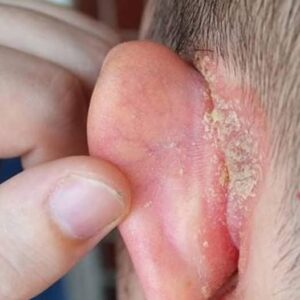How to Deal With Silverfish in Your Home
You’re brushing your teeth, half-awake, when something small and creepy darts across your bathroom floor. Gross, right? If this happens often, you may have a silverfish problem. Those shiny, squirmy bugs that look like a fish-bug hybrid are more common than you think.
So what exactly are silverfish? Why do they invade your home? And most importantly, how can you get rid of them for good?
What Are Silverfish?
Silverfish are tiny, wingless insects that have existed for millions of years. Yes, prehistoric! They measure about 1½ inches, sometimes smaller or slightly longer. Their bodies are flat, carrot-shaped, and covered in silvery scales. With long antennae, they move in a creepy, wiggly, snake-like motion.
Don’t worry—they don’t bite or fly. But they aren’t harmless either.
Why Silverfish Invade Your Home
Spotting silverfish in your bathroom, basement, kitchen, or laundry room means your house meets all their needs:
-
High humidity: They thrive in damp spaces.
-
Darkness: Sunlight is their enemy.
-
Starchy or sugary materials: Paper, glue, cardboard, fabric, crumbs—they eat it all.
They’ll chew on wallpaper glue, book bindings, old newspapers, and even dandruff. Basically, any carbohydrate is a snack.
Are Silverfish Harmful?
Silverfish don’t sting or spread disease, but they can cause serious damage:
-
Books & Paper: They eat glue and pages.
-
Clothing & Linens: Especially items stored long-term.
-
Wallpaper: The glue is a target.
-
Food: Pantry staples like flour, oats, and cereal.
And here’s the kicker—they breed fast. One or two can become a full-blown infestation in months.
Signs You Have a Silverfish Problem
Besides spotting them scuttling across the floor, look for:
-
Yellow stains or tiny holes in paper or fabric
-
Shedded skins from molting
-
Tiny black droppings in dark corners
-
Wallpaper damage along seams and corners
If these appear in damp areas, it’s time to take action.
How to Get Rid of Silverfish
1. Dry the Environment
Silverfish cannot survive in dry conditions. Use a dehumidifier in bathrooms and basements. Ensure good air circulation and ventilation.
2. Eliminate Their Food Sources
Remove old papers, books, and cardboard from damp spots. Store pantry items in airtight containers. Vacuum regularly, especially under furniture.
3. Seal Cracks and Crevices
Caulk gaps along baseboards, walls, and pipes. Reduce hiding spots and make your home less inviting.
4. Use Natural Repellents
Sprinkle diatomaceous earth or boric acid powder in problem areas. Essential oils like lavender, citrus, or cedarwood can help repel them.
5. Trap Them
Wrap a jar with masking tape, place a piece of bread inside, and let silverfish climb in. They won’t be able to escape.
6. Call the Pros
If you see multiple silverfish during the day, it’s time for professional pest control. Experts can assess the infestation and treat it effectively.
Preventing Silverfish from Returning
After removing them, keep them out:
-
Use moisture absorbers in closets and under sinks
-
Store paper products and clothing in plastic bags
-
Avoid piling clothes, cardboard, or crumbs
-
Keep your home dry, clean, and clutter-free
Basically, if your home is dry and organized, silverfish won’t stick around.
Final Thoughts
Finding silverfish is unpleasant but common. These little survivors love moisture and carbs. They don’t bite, but they can damage your belongings.
The good news? With identification, cleaning, drying, and prevention, you can keep your home silverfish-free. Trust me—I’ve been there, and it works.




